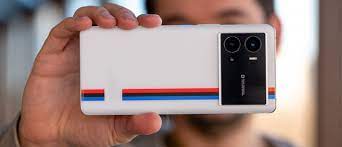How to Monitor Your Computer’s GPU Temperature

As a computer user, it’s important to monitor your computer’s GPU (Graphics Processing Unit) temperature. This is because if the temperature is too high, it can cause damage to your computer’s graphics card and reduce its performance. Additionally, high GPU temperatures can cause your computer to crash, freeze, or shut down unexpectedly. Here are some tips on how to monitor your computer’s GPU temperature.
1. Use GPU-Z
GPU-Z is a lightweight and easy to use software that allows you to monitor your computer’s GPU temperature, clock speed, memory usage, and more. It’s free to download and can be used with both NVIDIA and AMD graphics cards. Once you’ve downloaded GPU-Z, run it and check the “GPU Temperature” section to see your graphics card’s temperature.
2. Use MSI Afterburner
MSI Afterburner is a powerful and popular graphics card overclocking tool that also allows you to monitor your computer’s GPU temperature. It’s free to download and can be used with both NVIDIA and AMD graphics cards. After installing MSI Afterburner, launch the program, click on the settings icon and select “Monitoring.” From there, you can enable GPU temperature monitoring and choose how it’s displayed.
3. Use HWMonitor
HWMonitor is a comprehensive system monitoring program that allows you to monitor your computer’s CPU, GPU, motherboard, and other components. It’s free to download and can be used with both NVIDIA and AMD graphics cards. Once you’ve installed HWMonitor, run the program and check the “GPU” section to see your graphics card’s temperature.
4. Use GPU Temp
GPU Temp is a simple and lightweight program that allows you to monitor your computer’s GPU temperature. It’s free to download and can be used with both NVIDIA and AMD graphics cards. Once you’ve installed GPU Temp, run the program and check the “Temp” section to see your graphics card’s temperature.
5. Use your graphics card manufacturer’s software
Most graphics card manufacturers provide their own software that allows you to monitor your GPU temperature. For example, NVIDIA provides the NVIDIA Control Panel and AMD provides the AMD Radeon Settings software. These programs allow you to monitor your GPU temperature, adjust fan speeds, and more.
In conclusion, monitoring your computer’s GPU temperature is important to ensure the longevity and optimal performance of your graphics card. By using the above-mentioned methods, you can monitor your GPU temperature easily and be alerted if it’s getting too high. By taking care of your graphics card, you can avoid costly repairs and upgrades in the future.






